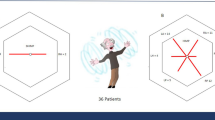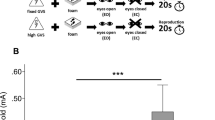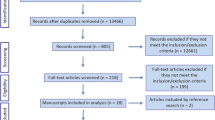Abstract
We studied the vertical posture in subjects in the standing position with different turns of the body and different distributions of the load between the legs. We recorded the motion of the projection of the common center of pressure (CCP) and of the center of pressure (CP) for the left and right legs. The predominant direction of CP movement was determined from a stabilogram, and then changes of this direction were analyzed during body turns and with different load distributions between the legs. Body turn led to the shift of the predominant direction of CCP movement towards the turn side. This change in the direction of CCP movement was observed with any load distribution between the legs. At the same time, weight transfer to one leg also led to the direction shift of CCP movement towards the loaded leg. The direction of CP movement of the loaded leg did not change, but the direction of CP movement of the unloaded leg shifted clockwise upon unloading both right and left legs. We assume that the changes in the mechanisms of maintaining the vertical position with asymmetric distribution of the leg load may be associated not only with the change in the force interaction with the supporting surface, but also with asymmetry of axial muscle tone.



Similar content being viewed by others
REFERENCES
Günther, M., Grimmer, S., Siebert, T., and Blickhan, R., All leg joints contribute to quiet human stance: a mechanical analysis, J. Biomech., 2009, vol. 42, p. 2739.
Gurfinkel’, V.S., Lipshits, M.I., and Popov, K.E., Study of the system of regulation of vertical posture by vibrostimulation of muscular spindles, Fiziol. Chel., 1977, vol. 3, no. 3, p. 635.
Grigor’ev, A.I., Kozlovskaya, I.B., and Shenkman, B.S., The role of support afferents in organization of the tonic muscle system, Ross. Fiziol. Zh. im. I.M. Sechenova, 2004, vol. 90, no. 5, p. 508.
Kazennikov, O.V., Kireeva, T.B., and Shlykov, V.Yu., Influence of the structure of the support surface under the sole on vertical posture during standing with different body weight distributions between legs, Hum. Phy-siol., 2016, vol. 42, no. 4, p. 401.
Pialasse, J.P. and Simoneau, M., Effect of bracing or surgical treatments on balance control in idiopathic scoliosis: three case studies, J. Can. Chiropractic Assoc., 2014, vol. 8, p. 131.
Brumagne, S., Janssens, L., Knapen, S., et al., Persons with recurrent low back pain exhibit a rigid postural control strategy, Eur. Spine J., 2008, vol. 17, p. 1177.
Lee, Y.J. and Aruin, A.S., Effects of asymmetrical stance and movement on body rotation in pushing, J. Biomech., 2015, vol. 48, p. 283.
Kazennikov, O.V., Kireeva, T.B., and Shlykov, V.Yu., Characteristics of the maintenance of the vertical posture during standing with an asymmetrical load on the legs, Hum. Physiol., 2013, vol. 39, no. 4, p. 392.
Pialasse, J.P., Descarreaux, M., Mercier, P., and Simoneau, M., Sensory reweighting is altered in adolescent patients with scoliosis: Evidence from a neuromechanical model, Gait Posture, 2015, vol. 42, p. 558.
Barra, J., Oujamaa, L., Chauvineau, V., et al., Asymmetric standing posture after stroke is related to a biased egocentric coordinate system, Neurology, 2009, vol. 72, no. 18, p. 1582.
Funding
The study was supported in part by the Russian Foundation for Basic Research, project no. 18-015-00266.
Author information
Authors and Affiliations
Corresponding author
Ethics declarations
Conflict of interests. The authors declare that they have no obvious or potential conflict of interest related to the publication of this article.
Statement of compliance with standards of research involving humans as subjects. All procedures performed in studies involving human participants were in accordance with the biomedical ethics principles formulated in the 1964 Helsinki Declaration and its later amendments and approved by the local bioethics commission of the Kharkevich Institute for Information Transmission Problems, Russian Academy of Sciences (Moscow). Each participant submitted a voluntary written informed consent, signed by him after explaining to him the potential risks and benefits, as well as the nature of the forthcoming study.
Additional information
Translated by E. Babchenko
Rights and permissions
About this article
Cite this article
Kazennikov, O.V., Talis, V.L. Postural Sway during Body Turn in Symmetrical and Asymmetrical Standing in Humans. Hum Physiol 45, 383–388 (2019). https://doi.org/10.1134/S0362119719040030
Received:
Revised:
Accepted:
Published:
Issue Date:
DOI: https://doi.org/10.1134/S0362119719040030




